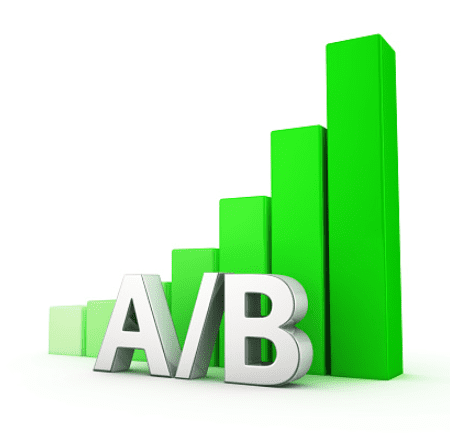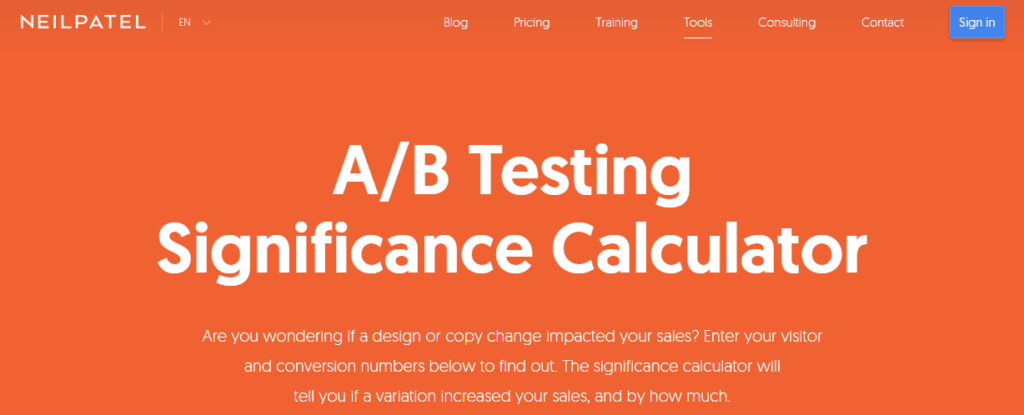
Introduction
Did your marketing campaigns fail even after plenty of research? Here is where A/B testing or split testing jumps in to save the day. A fantastic method helps calculate your business’s best marketing strategies and online promotions.
A/B Testing works for almost everything from sales emails to website copy. Seek the best-performing version of your campaign with an A/B test to avoid wasting your marketing budget. While you might find this strategy time-consuming, its advantage is enough to make it worth it.
In a word, some well-planned A/B tests can change tables. Narrowing down and combining the most effective elements of promotion can create an absolute difference.
Thus bringing you higher returns on investment, lower failure risks, and a more robust and effective marketing plan.
What is A/B Testing?
A/B testing or split testing is a methodology to compare two versions of a landing page, webpage, app, or other user experiences to determine which one performs better.
Key Takeaways
- Data-Driven Decisions: A/B testing provides concrete data to make decisions. Instead of guessing whether a new design or feature will be effective, you can use A/B testing to gather data on the impact of these changes.
- Improving User Experience: It allows you to understand your users better and make your website or app more user-friendly.
- Risk Mitigation: A/B testing can help mitigate risks by allowing you to test changes on a small portion of your audience before implementing them widely.
- Enhancing Conversion Rates: Optimizing your content and design elements can significantly improve conversion rates to encourage more users to take desired actions.
Benefits of A/B Testing
Are you one of those B2B businesses that are unhappy with the leads they get per month? On the other hand, e-commerce stores are struggling with a high cart abandonment rate.
The case is no new to media publishing houses dealing with low viewer engagement.
These core conversion metrics highlight the common problems, including drop-offs on the payment page, leaks in the conversion funnel, etc.
Let us see what an A/B test for marketing could do to improve the situation:
1. Solve visitor pain points
Visitors come to your website to find answers or solutions to specific goals. To understand a service or product, browse or buy a particular product.
Whatever the visitor’s goal, they may face common pain points while achieving their prime goal. However, some website designs confuse finding the CTA button, like requesting a demo, buying now, etc.
Failing to achieve their goals leads to a bad user experience and an unsatisfied client. Thus, it increases friction and eventually affects your conversion rates.
Gathering data from Google Analytics, Heat Maps, and website surveys can help solve your visitors’ pain points.
2. Get better ROI from existing traffic
Most experienced optimizers agree that the cost of acquiring quality traffic on your website matters. It helps increase conversions with your existing traffic without spending additional dollars on finding a new audience at an earlier stage.
3. Reduce bounce rate
Another important metric to analyze is your website’s performance in tracking down your bounce rate. There are many reasons to comprehend the website’s high bounce rate, including expectations mismatch, confusing navigation, too many options, etc.
Besides finding friction and visitor pain points, it helps improve website visitors’ overall experience. In that way, they spend more time converting into a paying customer.
Best A/B Testing Tools to Try
Does A/B testing sound complicated? Well, you are not the only one. Many business owners and marketers avoid the A/B tests because they find them lengthy and are worried they might go wrong.
After reading A/B testing for marketing, I hope you know its actual worth. Now, let us talk about the tools to do an A/B test.
The tool you use depends on the feature you would like to test. For example, if you want to try email headlines, email providers like Mailchimp or Constant Contact will provide you with relevant tools.
Several cheap, free-to-use tools can test website elements and help you understand the best variant.
Practical Examples
Now that we know what an A/B test is, why it is so important, and how to do it, let us understand more with this example.
This will help highlight the power of this testing by explaining what you lack if you are not considering them for your marketing strategies.
GRENE Tested Horizontal Layout on Category Pages
GRENE is an online retailer that ran an A/B test to find a way for users to quickly find the products they are searching for. The effect would take an entire page on mobile devices, making it harder for users to scroll through the different options.
With the A/B test, the marketer learned how reducing white spaces would allow users to view several products and quickly scroll through the available options.
Results: In this example of split testing, we learned how changing the layout for category pages could increase product box clicks by 15%, conversions by 16%, and visits to the thank you page by 10%, indicating that users made a purchase and were satisfied.
How do you validate an A/B test?
Once you complete your A/B test, you will have a pile of data. Now, how do we validate the suitable variant? Sometimes, the data is as clear as water.
For example, if one landing page version results in 50% more email sign-ups, you can take that along without analyzing much data. However, it is not always so clear. Here is how to validate which version indeed won:
1. Have enough data
Precise variation needs around two weeks of data to perform well, meaning at least 30 conversions.
2. Use an A/B testing calculator
Some online tools provide a built-in A/B testing calculator. Add your visitors and conversion numbers to calculate how much the variation increased sales.
Free A/B Testing Calculator

Are you wondering how a design or web copy can affect your sales? Here is a free calculator that calculates if a variation increased your sales and how much based on the data you enter for your visitor and conversion numbers.
3. Look beyond the obvious metrics
Not all metrics create similar results. Therefore, the general advice is to analyze organic traffic and conversion rates. However, other metrics like average order size would also be necessary for some businesses.
For example, changing “BUY NOW” to blue increases conversions, but you must keep improvising if those customers spend less per order.
FAQ
What are the requirements for A/B testing?
Here are the key requirements for conducting A/B testing:
- Two Versions of Content: You must create two versions of one content, with changes to a single variable.
- Similar Audience Size: The two versions should be shown to two audiences of similar size.
- Sufficient time: The test should run over a specific period long enough to conclude your results accurately.
- Clear Hypothesis: Hypothesize about one or two changes that will improve the page’s conversion rate.
- Equal Traffic Distribution: Divide incoming traffic equally between each variation and the original page.
- Statistical Significance: A winner will be declared if one variation has a probability of being the best score above 95%.
- Minimum Test Duration: The minimum test duration has passed (default is two weeks).
- Goal Definition: Define the conversion metrics, as they are unique to each website.
What are some A/B testing tools?
Here are some of the best A/B testing tools:
- HubSpot & Kissmetrics’ A/B Testing Kit: This free tool provides a how-to guide for instruction and inspiration in an easy-to-use spreadsheet. It’s a great starting point if you’re new to A/B testing.
- Optimizely: Optimizely is a popular tool that allows you to experiment on everything from design choices to algorithms.
- Omniconvert: It is a Conversion Rate Optimization tool that allows you to personalize your website’s experience for your visitors.
- CrazyEgg: CrazyEgg provides heatmaps, scroll maps, and other visual reports to show you where your users are clicking and where they’re not.
What are some A/B testing calculators?
Here are some of the best A/B testing calculators:
- Neil Patel’s A/B Testing: This calculator helps determine if a design or copy change impacted your sales. You can enter your visitor and conversion numbers, and the calculator will calculate if a variation increased your sales and by how much.
- Convert.com: This calculator does significance, p-value, power, sample size, and MDE calculations and supports test planning and post hoc analysis for conversion rate, average order value, and revenue per visitor metrics.
- Dynamic Yield: This Bayesian-powered A/B testing calculator helps you determine if your test results are statistically significant.
Conclusion
A/B testing is the right hand for any marketer. It calculates what offers your audience responds to, what blog headlines drive the most traffic, or what ads drive the most conversions.
More Resources:
Conversion Rate Optimization (CRO): A Definitive Guide
Minimum Viable Product (MVP): How To Build It?

Vijay Kumar is a digital marketing expert and founder of TechZant.
He is passionate about helping businesses grow their online presence through SEO and data-driven strategies.







